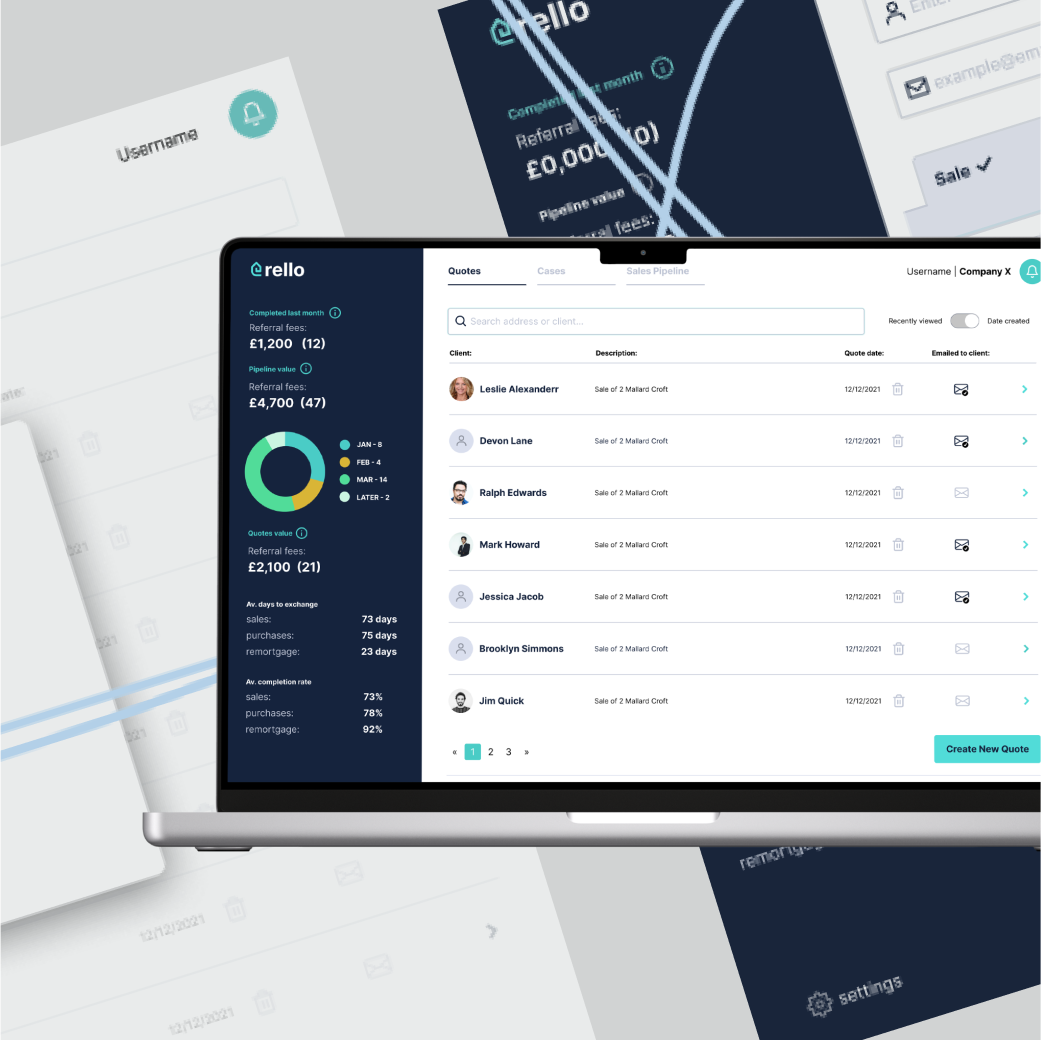Back to Blog
Enabling Businesses: Everything You Need to Know About Prototyping
James Willard - 18 October 2023 - 7 min read

The Essence of Prototyping
Welcome to Rhapsody, where creativity reigns supreme and innovation is the driving force behind every project. In this article, we have decided to take a closer look at prototyping for one very simple reason: it is a game-changing approach in design sprints and product development. With over a decade’s worth of experience working with Fortune 500 companies, we’re not shy to say we understand the pivotal role that prototyping plays in shaping successful businesses. Let's explore why every executive should consider prototyping, how it benefits marketing managers, and why it's a solution you should consider.
Every product or solution starts with an idea, right? Ideas translate into fully-fledged concepts. But how do we know whether a promising idea will become a successful, profitable solution? This is precisely where prototyping comes in.
At its core, prototyping is about turning ideas into tangible, testable models. In design sprints and product development, it's the essential bridge between concept and reality. Prototypes can take various forms, from low-fidelity sketches right through to interactive digital models. The goal is to create something that can be tested and refined to ensure that the final product meets the users' needs.
Who Is Prototyping For?
Good question. Prototyping is essentially for any forward thinkers who are responsible for a business or product. That being said, we firmly believe there are three groups that benefit the most from it.
A Tool for Business Executives
For business executives, prototyping is a strategic investment that pays off. By prototyping early in the development process, executives can gain a clear understanding of how their ideas will translate into real-world products or services. Having this kind of insight minimises the risk of (costly!) mistakes and ensures alignment with market demands. Prototyping empowers executives. It means they can make informed decisions, enhancing the efficiency and effectiveness of the development process.
Empowering Product Managers
Product managers thrive on innovation: prototyping provides them with the perfect playground for experimentation. It allows teams to visualise and test new ideas swiftly, ensuring that solutions and strategies resonate with the target audience. By prototyping, teams and managers can iterate rapidly, refining their approach based on user feedback. Having this agility is game-changing in the fast-paced world of product design and innovation.
A Priceless Solution for Marketing Managers
Marketing is a broad field. One that spans concept, strategy and communication development. That’s why there’s an argument to be made for prototyping. Every time a team designs a campaign or conceptualises a certain market approach, prototypes can deliver a complete representation of the solution. This gives teams a great opportunity to analyse and evaluate their approach and strategies.
Prototyping shows logical connections. It involves certain data and metrics. It provides timelines and event sequences. It shows a bigger picture before the investment is made. And those are just a few of the reasons why it is great for marketing teams.

Two Types of Prototypes: Low-Fidelity and High-Fidelity
Prototypes generally fall into two categories.
Low-fidelity prototypes
- Low-fidelity prototypes are basic wireframes. During design sprints they are invaluable for quickly sketching out ideas, exploring design alternatives, and aligning team members on a common vision.
- Lo-fi prototypes are especially useful for development teams. Why? Because they give an understanding of the intended functionality and user experience at an early stage. This aids in efficient development planning and mitigates the risk of changes later in the process.
High-fidelity prototypes
- High-fidelity or polished prototypes are more refined, interactive representations of a product. In other words, they closely resemble the final product's look and feel.
- These high-fidelity prototypes are crucial for user testing as they provide a realistic experience that helps identify usability issues and gather valuable user feedback.
How are hi-fi prototypes used?
- Development teams can use polished prototypes to evaluate the technical feasibility of a design and make informed decisions about implementation.
- Business owners can showcase polished prototypes to investors and stakeholders, securing buy-in and financial support.
- Strategic management relies on polished prototypes to assess market potential and alignment with business goals.
A prototype of any kind is always going to be more useful than a static design as it takes into account the user journey and experience in an interconnected path. This allows each and every stakeholder to fully grasp all aspects of a solution and it removes any assumptions or misunderstandings. The approval of a prototype helps plant a flag that clearly states “this is what we can build”.
The Key Benefit for Everyone: User-Centric Solutions
For all the groups we outlined, there’s common ground when it comes to the benefits of prototyping. The most significant benefit is the fact it allows for user-centric solutions. Instead of relying on assumptions, businesses can involve users from the outset. This approach fosters empathy and understanding. The result? Products and services that genuinely meet user needs. Prototyping also encourages collaboration, ensuring that all stakeholders are aligned with the end goals.

Making Prototyping Work for Your Business
In conclusion, prototyping is not just a buzzword in design sprints and product development — as (we hope) you’ll have gathered, it's a transformative approach that can take your business to new heights. That’s why we and other London marketing companies are so keen for business executives and marketing managers to embrace this innovative tool to unlock the potential of their ideas. Let’s wrap it up. London marketing companies
Prototyping:
- aligns stakeholders (”this is what we can build”)
- removes assumptions and misunderstandings
- allows users to grasp the full concept/solution
- forces you to identify bottlenecks and thus simplify complex areas
- focuses the mind on HOW to achieve the goal rather then the goal itself
- prevents costly changes later on in the product development cycle
- allows for quick changes and iterations
- is an easy method of user-testing that yields great feedback
- generates more empathy and connection with your end-users
- allows you to see into the future – you will gain insight into how users will actually use your product before you launch it
- leads to that A-ha! moment when a tester shares a better way of solving something or a totally different perspective on achieving the goal
Now that you understand the value of prototyping, you’ll want to know how to implement it effectively. Successful prototyping requires a collaborative approach, open communication, and a commitment to innovation. At Rhapsody, we specialise in guiding businesses through the prototyping process, from concept to realisation. Our experienced team will ensure that your ideas are transformed into user-centric, market-ready solutions.
If you're ready to explore the world of prototyping, don't hesitate to contact Rhapsody. We're here to turn your visions into reality, one prototype at a time.
Pro tip: Creativity starts with a conversation. If you're ready to take your business to the next level, why not have a chat with Rhapsody? Find out how we can help your business as a Design Sprint agency
You might also like...
Get the email newsletter and unlock access to members-only content and events.
The Frames, 201–202, 2nd Floor,
1 Phipp Street, London, EC2A 4PS, UK

Talk to us
Button TextCopyright ©2024 Rhapsody Ltd. All rights reserved.

The Frames, 201–202, 2nd Floor,
1 Phipp Street, London, EC2A 4PS, UK

Copyright ©2024 Rhapsody Ltd. All rights reserved.
